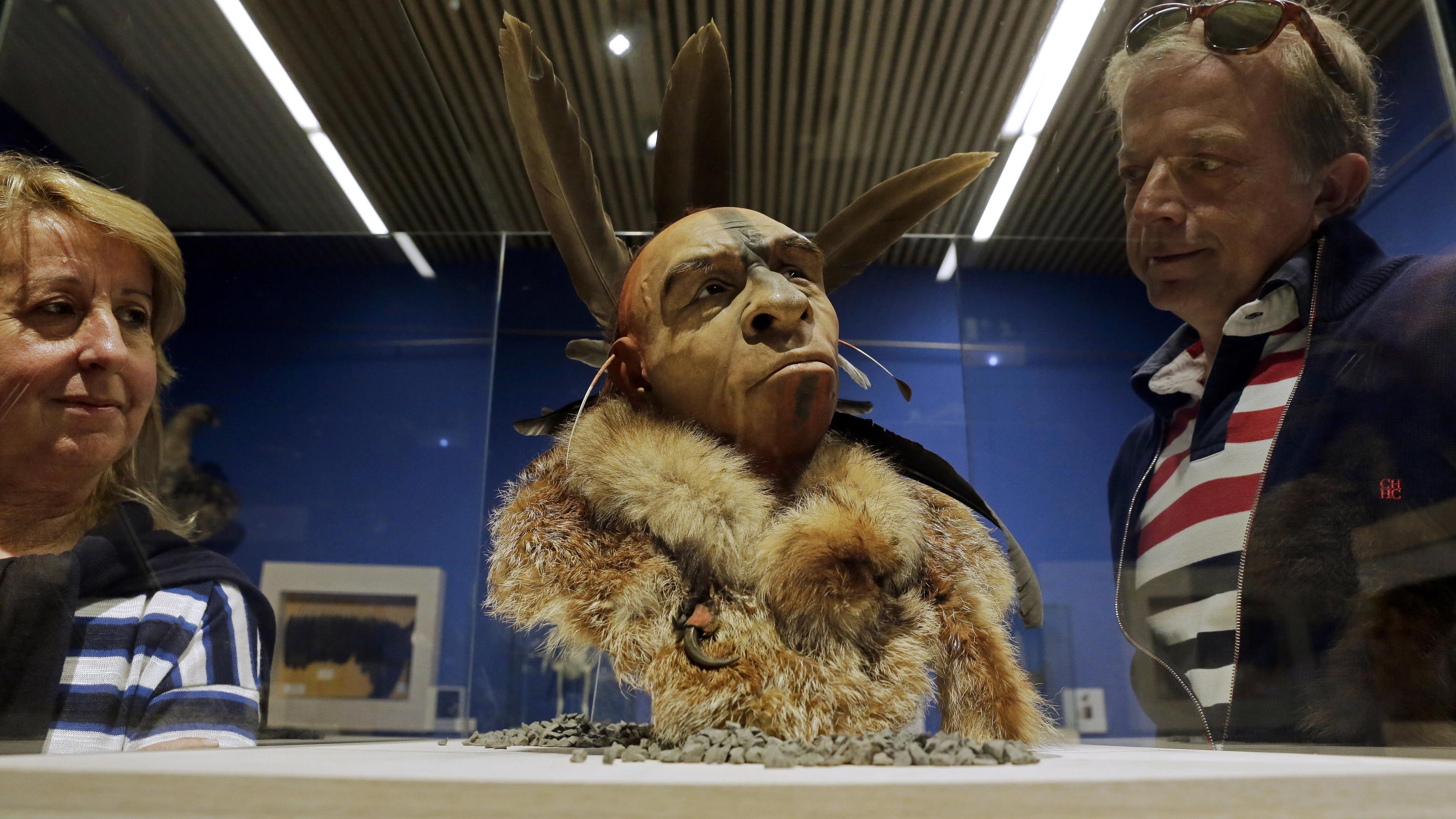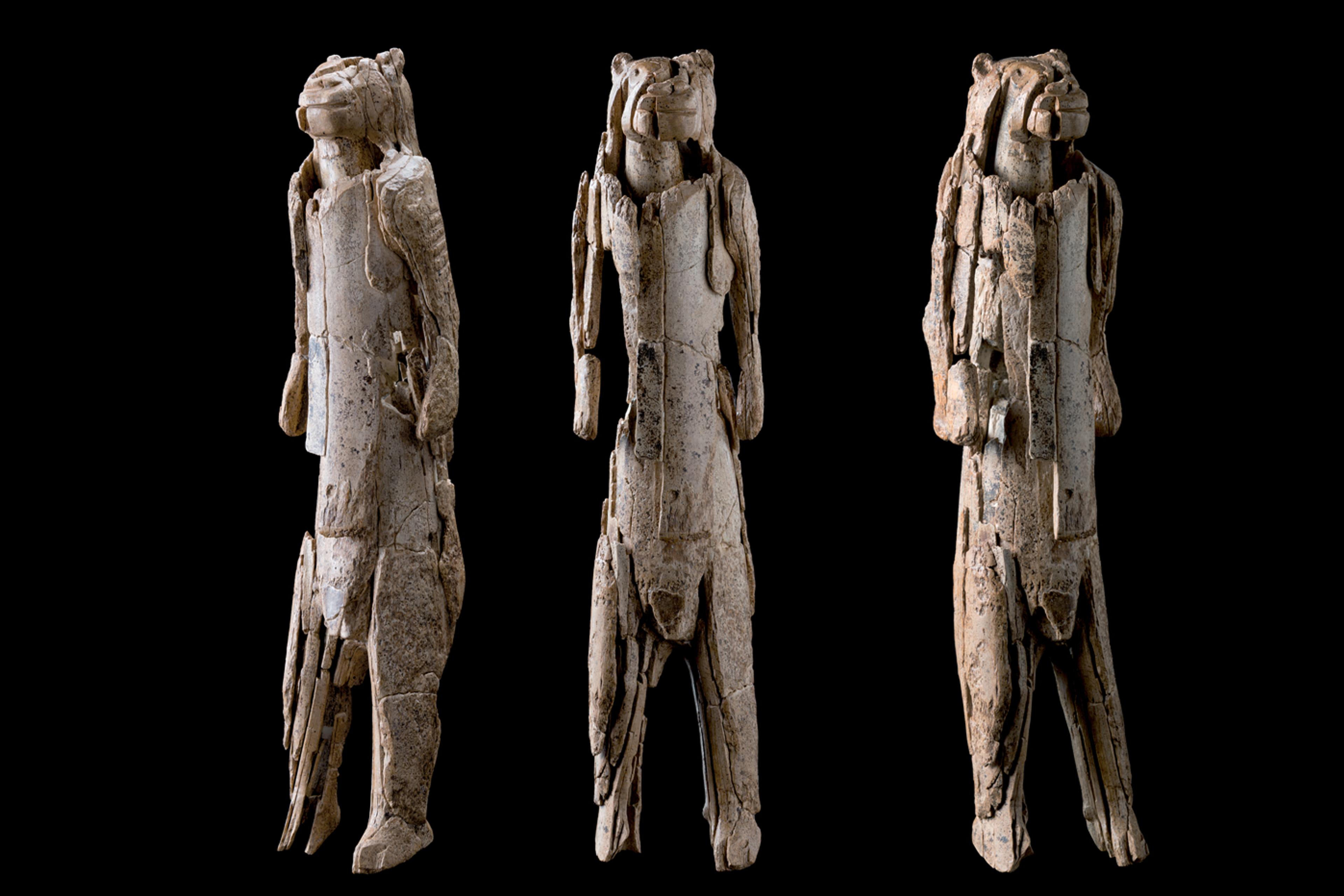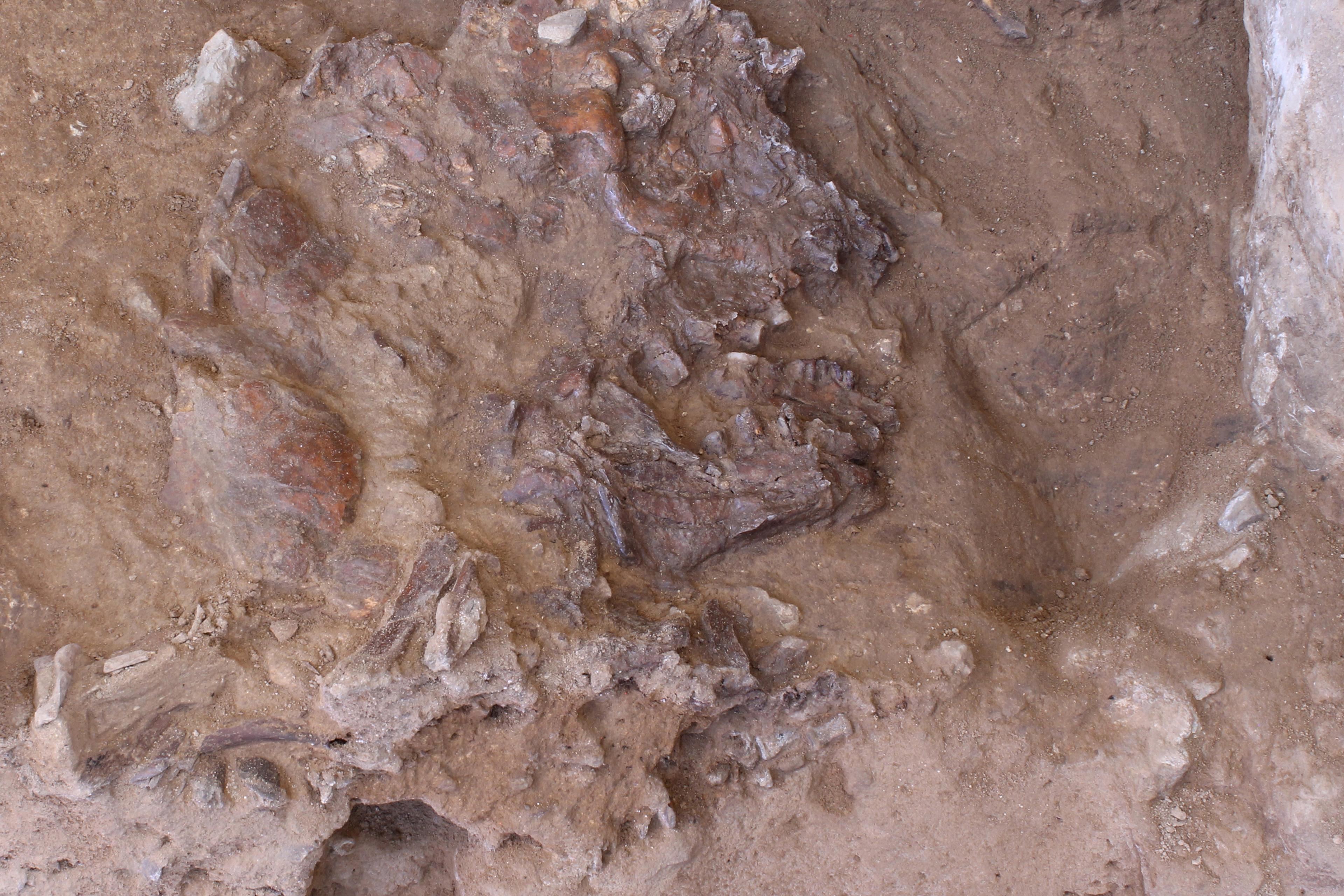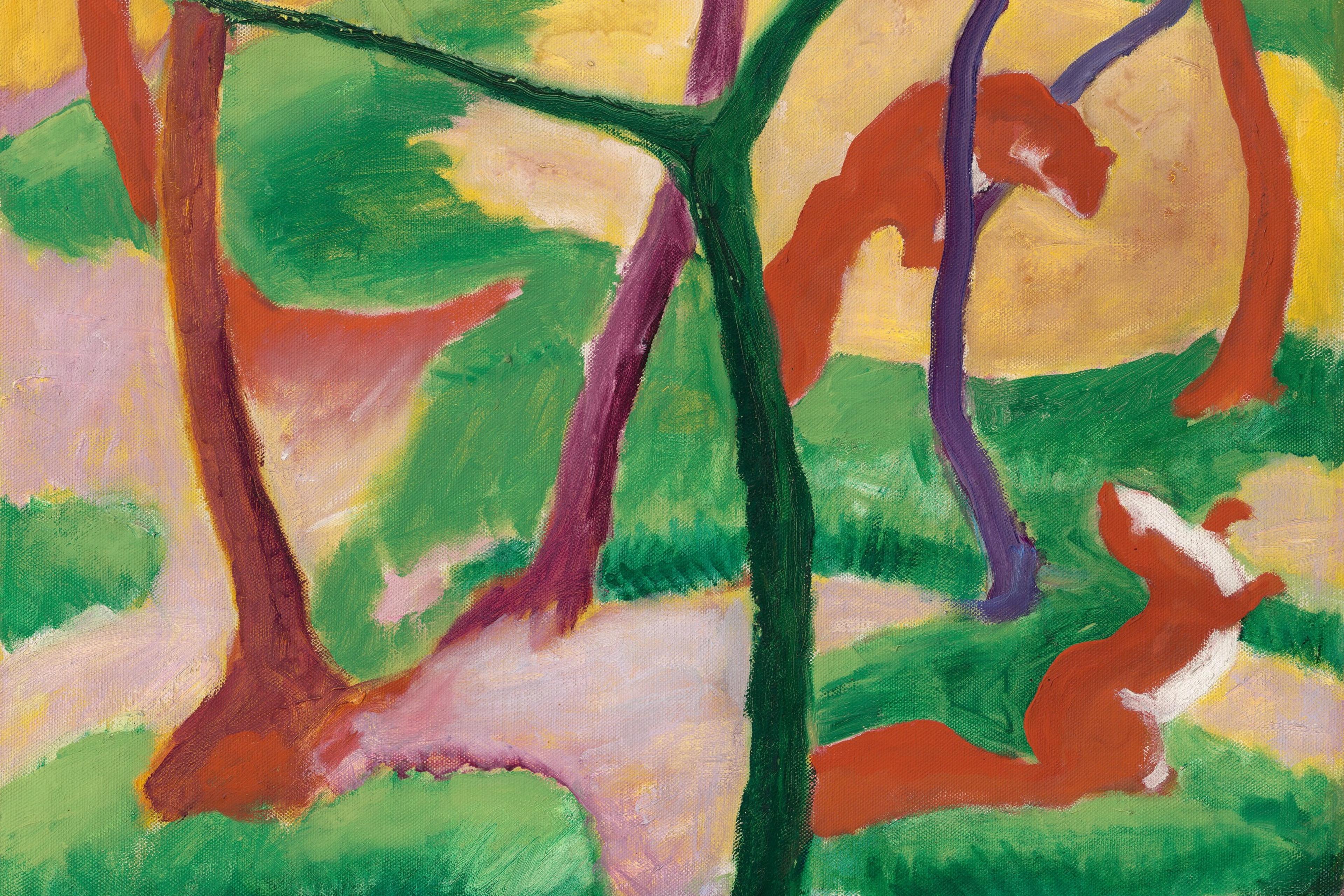We can only truly understand other people by knowing something about their language. Without that, we remain largely excluded from their lives – unable to fully grasp their concepts, emotions or how they perceive the world.
This applies to people of the past as well as those of the present. The languages of some prehistoric humans (such as Bronze Age farmers) can be reconstructed, to a limited extent, by comparing languages that are spoken today. But what about our more distant ancestors and relatives, those from our evolutionary past? They used language, too. Are their languages completely lost to us, restricting our understanding of humanity to our own surviving species?
Consider the Neanderthals. When first discovered in the late 19th century, they were seen as nasty and brutish; today we view them differently. We now know that the Neanderthals (Homo neanderthalensis) shared an ancestor with us, Homo sapiens, around 600,000 years ago and lived in Europe and Asia until 40,000 years ago. Their brains were roughly the same size as ours. They made tools from stone and wood, sometimes joining these together with resin and fibres to make spears for hunting big game. When H sapiens dispersed from Africa 70,000 years ago, they interbred with Neanderthals, leaving many of us today with their genes in our DNA. Despite how much we know about them, the Neanderthals remain an enigma – so similar to us, and yet so different. The most striking contrast is the relative absence of technological progression throughout Neanderthal existence.
This is the puzzle posed by Neanderthals: why have we made so much more technological progress than they did, despite their skill at flaking stone and making tools? Relatedly, why did our art develop from geometric designs at 100,000 years ago to figurative cave paintings by 38,000 years, while Neanderthal ‘art’ remained restricted to a few highly contested scratches and blobs of pigment for more than 300,000 years?
As I argue in my book The Language Puzzle (2024), the answer lies in language, and more specifically how the words we use influence not only what we communicate but how we think. Despite lacking the means to discover the specific words once spoken by Neanderthals, we can use recent advances in archaeology, linguistics, genomics and brain-related disciplines to make inferences about the types of words they used. By comparing them with our own, we can find out what is unique about our language, and hence our minds, today.
To do this, we first need to think about words. On average, each of us knows around 50,000 words and speaks 16,000 a day. These words, or rather the concepts we associate with them, are distributed throughout the brain. They are clustered into semantic groups – associated by their meanings or purpose – and snuck into every nook and cranny of our cortex.
Words come in several different categories. Content words (nouns, verbs, adjectives) are those that have a meaning, while grammatical words (conjunctions, prepositions and so forth) join together content words to make meaningful statements. Content words can be either concrete, referring to things that we can see, hear, smell, touch or taste, or abstract, referring to ideas that have no material presence, such as ‘freedom’, ‘love’ and ‘ownership’.
If I say that my colleague is a ‘peacock’, I do not mean he squawks and has feathers
Content words can also be divided into iconic and arbitrary words. Iconic words capture a sensory impression of their referent. They include onomatopoeias (such as ‘quack’ and ‘plop’) and words that mimic the size, movement or texture of an object. Languages throughout the world today commonly refer to small, quick things using small words with high front vowels, such as ‘fly’ and ‘bee’, and large things with long words with low back vowels, such as ‘hippopotamus’ and ‘enormous’. Iconic words are found in all modern-day languages and dominate the lexicons of young children. They are, however, poor at conveying detail and insufficient for our needs. That is why we need arbitrary words. These have meanings agreed by convention. A four-legged canine, for instance, can be called a ‘dog’, ‘hund’, ‘chien’ and many other things, depending on the language being spoken. Arbitrary words enable us to talk about many more things and in greater detail than iconic words alone would allow.
Hybrid words have qualities of both iconic and arbitrary words. In English today, for instance, we distinguish between ‘flicker’, ‘flash’ and ‘flame’. Their beginnings capture the same type of sudden event involving light, mimicked by how we make the /fl/ sound, while their endings provide further information about that event to enable effective communication.
Finally, we must note that words can be used in either a literal or a metaphorical sense. If I say that my colleague is a ‘peacock’, I do not mean he squawks and has feathers, but that he is prone to showing off.
The evidence that Neanderthals had some types of words comes partly from their skeletal remains. Meticulous anatomical studies show that their vocal tracts were nearly identical to ours – overturning previous views that they were unable to generate enough vowels for spoken language. The shape of Neanderthal ear bones and cochlea (as seen via CT scans of skull fragments) show that their auditory tracts were also not significantly different to our own, which have been tuned by evolution to the sound frequencies used in speech.
This isn’t to say that the Neanderthals would have sounded the same as we do. They had larger noses, giving their vowels and consonants more nasal qualities. They also had larger lung capacities, enabling them to speak with longer and louder utterances before needing to draw breath, and allowing their stop consonants (their Bs, Gs, Ks, Ps and Ts) to be even more forceful – or plosive, to use a linguistic term – than ours.
Neanderthals had iconic, arbitrary, hybrid and grammatical words, ordered using a form of syntax
What types of words were they using? Iconic words for certain. These provided the evolutionary bridge between the barks and grunts of the 6-million-year-old chimpanzee-like ancestor (of all human types) and the arbitrary words that now dominate our vocabulary. Iconic words were likely used by Homo erectus by 1.6 million years ago, these being required for communicating about the hunting and scavenging they undertook. Iconic words alone, however, were insufficient for the more sophisticated and varied hunting done by Neanderthals. They would have needed to distinguish between different types of large animals and types of small animals, types of stone and types of wood. Such fine distinctions would require the use of hybrid and fully arbitrary words.
Arbitrary words would have naturally developed from the iconic words that had been passed down from generation to generation ever since the time of H erectus. Such transmission involves mispronunciations and mis-hearings, the use of abbreviations, combinations, and the constant tweaking of meanings, either by intention or accident. These processes of word-change continue today, causing words to constantly change what they mean and how they sound. The transmission process also causes the emergence of recurrent patterns in the ways that words are ordered. We can be confident, therefore, that Neanderthals had iconic, arbitrary, hybrid and grammatical words, which were ordered using some form of syntax.
We can go further based on the factors that influence present-day linguistic diversity. Relatively small and isolated speech communities tend to make use of fewer sounds, have longer words and more complex word morphology (the addition of beginnings or endings to modify meanings). We know from both archaeological and genomic evidence that the Neanderthals lived in particularly small communities. This suggests that their languages likely had the same (and probably exaggerated) features of those so-called esoteric languages found in small speech communities today. It also implies that there would have been a multitude of distinctive Neanderthal languages.
So far, Neanderthal language appears no different from what we use today. It was, however, profoundly different, as multiple lines of evidence indicate that they lacked metaphor and abstract words.
Anthropology, neuroscience and genomics have converged on the view that Neanderthals’ brains had a different internal structure than ours. More of their brain matter was devoted to visual processing, restricting what was available for other tasks, such as language. They also had a smaller and differently shaped cerebellum, a brain structure that contributes to language processing, production and fluency. Moreover, several of the genetic changes that occurred in the H sapiens lineage after our split from the Neanderthals influenced our neural networks. These likely became more extensive, connecting what had previously been specialised and relatively isolated areas, to deliver what archaeologists have termed ‘cognitive fluidity’ and psychologists a ‘global workspace’.
The absence of cognitive fluidity solves the Neanderthal puzzle: they struggled to connect the different semantic clusters of words within their brains, such as those relating to animals, people and tools. As I explained in my book The Prehistory of the Mind (1996), archaeological evidence indicates the Neanderthals kept these domains of thought quite separate from each other. For instance, they did not design hunting weapons for killing specific types of animals in specific circumstances, as we find among modern-day hunter-gatherers. To do so requires bringing together what one knows about particular animals, including their physiology and behaviour, with what one knows about artefacts – how to flake stone and sharpen sticks. The Neanderthals did not blend such knowledge, despite having considerable need to do so. The injuries they frequently suffered from close-encounter hunting using thrusting spears could have been avoided by using bows and arrows or thrown spears.
You will struggle to talk about anything other than what we can see, hear, touch, taste or smell without using metaphors
Being unable to fully connect their semantic clusters of words, the Neanderthals were unable to make use of metaphor – the use of one domain of thought to inform about another. Metaphors have long been recognised as an essential feature of modern-day language for enabling innovative and creative thought. Their significance for thought has been most evident in science, whether it was Johannes Kepler in 1605 comparing planetary motion to the movements of a clock or Stephen Hawking calling an area of spacetime with immense gravity a ‘black hole’. Such metaphors are used not only to communicate difficult ideas but also to grasp and think about them.
Abstract ideas and many abstract words are dependent on metaphors. What, for instance, is ‘love’? Mother Teresa said: ‘Love is a fruit, in season at all times, and within the reach of every hand,’ while the Russian novelist Ivan Turgenev called it ‘a disease and disease knows no laws.’ Try explaining love to someone without using not only what is evidently a metaphor but also what we can call ‘dead metaphors’ – those for which the original imagery has been forgotten. ‘Attraction’, for instance, is a word for objects being drawn together, something unrelated to emotions, although we use it for that purpose. Indeed, you will struggle to talk about anything other than what we can see, hear, touch, taste or smell without using metaphors, or abstract words whose meanings are dependent on metaphor. Ultimately, you will be restricted to concrete words alone: you will be talking like a Neanderthal.
After the Ice Age ended, the invention of farming was possible because modern humans were able to think about plants and animals in metaphorical terms – treating them as children that needed to be fed and watered, protected from diseases and pests. Neanderthals had lived through similar interglacial environments without any such change in their lifestyles. Farming enabled population growth in settled communities and allowed the modern metaphorical mind to run riot, taking us from the Stone Age to the Digital Age in 10,000 years.
The Idea draws on research published in The Language Puzzle (2024), published by Basic Books.








